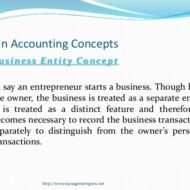Posted by Managementguru in Human Resource, Organisational behaviour, Principles of Management
on Feb 28th, 2014 | 0 comments

An Open Frame of Mind: Line and staff authority should be open with each other and come out of their compartmentalized state of mind. Rationale thinking and logical action is what is required to understand and resolve conflicts.Be a Manager rather than a Technocrat: Specialization has made people to stick to their line of action and they act merely like tech wizards and conveniently forget the human element of flexible mental purview and compromise. Development of each individual’s managerial qualities will minimize conflicts. A manager has to harmonize functions of diverse natures and bring about co-ordination.Think as an Entrepreneur: Thinking about the strength, weaknesses, opportunities and threats an organization faces makes each individual realize that he or she is part of the organization and whatever happens to the firm directly affects his/her stability and security.Make others feel a Sense of Achievement: It is the job of a manager to appreciate and encourage the achievements of his sub ordinates that bring greater joy in the minds of individuals and motivate them to work for the cause.Interaction among Functions: Cross functional interactions on a continuous basis are found to be useful in preventing and resolving conflicts. Informal groups serve as the best example of a committee consisting of members from different functional groups but with a common interest. These groups can be best identified and utilized by the management to resolve conflicts by seeking the help of the key person in the group.Roles, Responsibilities and the Scope of other Functions: The basic requirement is to first clearly define the objectives and sub objectives, the process, the roles of each function as a tool and their rights and responsibilities. One should know the roles and responsibilities of all functions having common interface: their position in the firm as well as their relevance and contribution towards the organizational goals.Communication and Information Sharing: The informal communication system helps in achieving group dynamics and cohesion while the formal channels take care of organizational directives. A quick and effective means of communication can considerably reduce the conflict level that arises out of communication disorders.Adequate Planning and Co-ordinations: At each operational level, hasty actions must be avoided to stop conflicts from arising. Planning and Co-ordination go hand in hand: Say, if a new product launch is aimed at without proper promotion, what would happen to the success of the project?Evaluation of Functional Performance: A standard mechanism must be set to evaluate managerial performance in terms of their ability to achieve an integrated set of objectives in a balanced manner.Necessity of Transparency: Transparency is needed at all functional levels or the initiator appears to be tainted with the accusation of having an ulterior motive. In case of big corporate firms all the policy decisions are taken by the board and not by a single person to avoid conflicts. Conflict need not necessarily be viewed as an evil but a disorder to be curbed. Sometimes a conflict might showcase the inherent inflexibility and malfunctions in the firm to be corrected paving way for innovations. Sometimes it causes frustration for the management by preventing synergy amongst the sub-systems. All said and done, conflict once identified have to be immediately dealt with and resolved by the management in order to facilitate smooth functioning of the...

Posted by Managementguru in Financial Management
on Feb 25th, 2014 | 0 comments

Venture Capital and Traditional Financing- Comparison of Advantage Venture capital is a new form of financing that has come as a boon for young entrepreneurs and it plays a strategic role in financing small scale enterprises and high technology and risky ventures. In all the developed and developing nations it has made its mark by providing equity capital, so, they are more like equity partners rather than financiers and they are benefited through capital gains. Don Valentine is known as "the grandfather of Silicon Valley Venture Capital". He was one of the original investors in Apple, Atari, LSI Logic, Cisco Systems, Oracle, and Electronic Arts back in the 1970s. So he has a top notch track record. Here are some of his quotes:— Lion (@Lion_Investor1) July 27, 2021 Venture capitalists evaluate the risk using the following factors: Management TeamCompetitive AdvantageMarket PotentialBarriers to entryExit Strategy Banks’ Stand Towards First Generation Entrepreneurs Young and growing businesses need capital at the right time, not only to float their company in the market but also to survive in the long run. When financial institutions like banks and other private financial organizations hesitate to take the risk of early stage financing, since the credibility of the budding firm is not established, venture capital firms comes into the foray to fund the project in the form of equity which can be termed as “high risk capital”. Venture Capitalist is like an Equity Partner Although there is a misconception that the interest of venture capital firms is mainly driven by cutting edge technology in the industry, it is not always the case with all venture capital firms. A venture capitalist associates high risk with huge profits; of course after thoroughly analyzing the prospects and consequences and the viability of the project. The venture capitalist becomes a partner with the entrepreneur in his business. True venture capital financing need not confine itself to high end technology products. Any risky idea with great potential can be financed and venture capital is an all powerful mechanism to promote and institutionalize entrepreneurship. Focus on Growth Mainly venture capital focuses on growth. A venture capitalist is very much interested to see a small business growing into a larger one. He assists in setting up the business, funding it and travels all along to see the firm grow. If it is potential equity participation, the venture capitalist can come out of the partnership once the company becomes profitable and take back his money by selling the shares or convertible securities. If the firm opts for a long term investment from the venture capital finance, the financier has to develop an investment attitude for a long term, say five or ten years to allow the company to make large profits. Active Participant in the Operations of the Firm Another form of financing is that the venture capitalist has his hands on management by which he becomes an active participant in the operations of the firm and his thinking is streamlined as to how to multiply and make quick money which is a win-win situation for both sides. Not only finance, the venture capitalist also contributes to marketing, technology upgradation and management skills to the benefit of the new firm. Venture Capitalist- Banker, stock market investor and an entrepreneur in one. The venture capitalist’s management approach is significantly different from that of a banker whose prime concern is collaterals and securities in the form of assets. He keeps his hands off the management and plays safe. The venture capitalist can also not behave like a stock market investor who invests money without having thorough knowledge about the company’s business and management. He combines the qualities...

Posted by Managementguru in Accounting, Financial Accounting, Management Accounting
on Feb 13th, 2014 | 0 comments

Accounting Concepts and Principles are a set of broad conventions that have been devised to provide a basic framework for financial reporting. Accounting concepts are postulates, assumptions or conditions upon which accounting records and statement are based.






